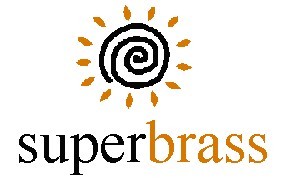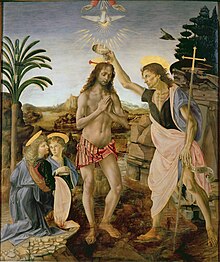No products
Latest Graphic Art Watches
New products
-

Seth vs Osiris, Ancient Egypt Metallic Original Art Solid Brass Collectible Mens' Watch
40 mm solid brass casing in gold finish with stainless steel back...
$ 121.44 -

Chinese Traditional Good Luck Dragon Art Gold Medallion Solid Brass Men's Watch
40 mm solid brass casing in gold finish with stainless steel back...
$ 129.59 -

English Colours Fire-Breathing Dragon Ancient Parchment Fantasy Art Brass Watch
40 mm solid brass casing in gold finish with stainless steel back...
$ 137.74 -

Ancient Blue Fire-Breathing Dragon Parchment Art Solid Brass Mens Dress Watch
40 mm solid brass casing in gold finish with stainless steel back...
$ 137.74 -

Golden Dragon Metallic Art Solid Brass Collectible Men's Fantasy Good Luck Watch
40 mm solid brass casing in gold finish with stainless steel back...
$ 121.44
Leonardo Da Vinci Gothic Skull Art Medical Study Parchment Dial Collectible Wrist Watch
WAT-LV1
New product
- impressive 40 mm solid brass casing with stainless steel back
- premium 2040 quartz movement.
- original parchment art acrylic dial
- waterproof bracelet with brass buckle
- 1 year warranty
More info
Leonardo di ser Piero da Vinci (Italian: [leoˈnardo di ˌsɛr ˈpjɛːro da (v)ˈvintʃi] (![]() listen); 15 April 1452 – 2 May 1519), more commonlyLeonardo da Vinci or simply Leonardo, was an Italian polymath whose areas of interest included invention, painting, sculpting,architecture, science, music, mathematics,engineering, literature, anatomy, geology,astronomy, botany, writing, history, andcartography. He has been variously called the father of palaeontology, ichnology, and architecture, and is widely considered one of the greatest painters of all time. Sometimes credited with the inventions of the parachute,helicopter and tank,[1][2][3] he epitomised theRenaissance humanist ideal.
listen); 15 April 1452 – 2 May 1519), more commonlyLeonardo da Vinci or simply Leonardo, was an Italian polymath whose areas of interest included invention, painting, sculpting,architecture, science, music, mathematics,engineering, literature, anatomy, geology,astronomy, botany, writing, history, andcartography. He has been variously called the father of palaeontology, ichnology, and architecture, and is widely considered one of the greatest painters of all time. Sometimes credited with the inventions of the parachute,helicopter and tank,[1][2][3] he epitomised theRenaissance humanist ideal.
Many historians and scholars regard Leonardo as the prime exemplar of the "Universal Genius" or "Renaissance Man", an individual of "unquenchable curiosity" and "feverishly inventive imagination".[4] According to art historian Helen Gardner, the scope and depth of his interests were without precedent in recorded history, and "his mind and personality seem to us superhuman, while the man himself mysterious and remote".[4] Marco Rosci notes that while there is much speculation regarding his life and personality, his view of the world was logical rather than mysterious, and that the empirical methods he employed were unorthodox for his time.[5]
Born out of wedlock to a notary, Piero da Vinci, and a peasant woman, Caterina, in Vinci in the region of Florence, Leonardo was educated in the studio of the renowned Florentine painterAndrea del Verrocchio. Much of his earlier working life was spent in the service of Ludovico il Moro in Milan. He later worked in Rome, Bologna and Venice, and he spent his last years in France at the home awarded to him by Francis I of France.
Leonardo was, and is, renowned primarily as a painter. Among his works, the Mona Lisa is the most famous and most parodied portrait[6] and The Last Supper the most reproduced religious painting of all time.[4] Leonardo's drawing of the Vitruvian Man is also regarded as acultural icon,[7] being reproduced on items as varied as the euro coin, textbooks, and T-shirts. Perhaps fifteen of his paintings have survived.[nb 1] Nevertheless, these few works, together with his notebooks, which contain drawings, scientific diagrams, and his thoughts on the nature of painting, compose a contribution to later generations of artists rivalled only by that of his contemporary, Michelangelo.
Leonardo is revered for his technological ingenuity. He conceptualised flying machines, a type of armoured fighting vehicle, concentrated solar power, an adding machine,[8] and the double hull. Relatively few of his designs were constructed or even feasible during his lifetime, as the modern scientific approaches to metallurgy and engineering were only in their infancy during the Renaissance. Some of his smaller inventions, however, such as an automated bobbinwinder and a machine for testing the tensile strength of wire, entered the world of manufacturing unheralded. A number of Leonardo's most practical inventions are nowadays displayed as working models at the Museum of Vinci. He made substantial discoveries in anatomy, civil engineering, geology, optics, and hydrodynamics, but he did not publish his findings and they had no direct influence on later science.[9]
Today, Leonardo is widely considered one of the most diversely talented individuals ever to have lived.[10]
Life
Childhood, 1452–1466
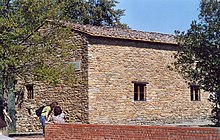
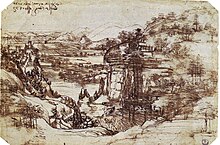
Leonardo was born on 15 April 1452 (Old Style) "at the third hour of the night"[nb 2] in the Tuscan hill town of Vinci, in the lower valley of the Arno river in the territory of the Medici-ruled Republic of Florence.[12] He was the out-of-wedlock son of the wealthy Messer Piero Fruosino di Antonio da Vinci, a Florentine legal notary, and Caterina, a peasant.[11][13][nb 3] Leonardo had no surname in the modern sense – "da Vinci" simply meaning "of Vinci"; his full birth name was "Lionardo di ser Piero da Vinci", meaning "Leonardo, (son) of (Mes)ser Piero from Vinci".[12] The inclusion of the title "ser" indicated that Leonardo's father was a gentleman.
Little is known about Leonardo's early life. He spent his first five years in the hamlet of Anchiano in the home of his mother, and from 1457 lived in the household of his father, grandparents and uncle in the small town of Vinci. His father had married a sixteen-year-old girl named Albiera Amadori, who loved Leonardo but died young[14] in 1465 without children. When Leonardo was sixteen (1468), his father married again to twenty-year-old Francesca Lanfredini, who also died without children. Piero's legitimate heirs were born from his third wife Margherita di Guglielmo (who gave birth to six children:[15] Antonio, Giulian, Maddalena, Lorenzo, Violante and Domenico) and his fourth and final wife, Lucrezia Cortigiani (who bore him another six children:[16] Margherita, Benedetto, Pandolfo, Guglielmo, Bartolomeo and Giovanni).[17][18]
In all Leonardo had twelve half-siblings, who were much younger than he (the last was born when Leonardo was forty years old) and with whom he had very few contacts, but they caused him difficulty after his father's death in the dispute over the inheritance.[18]
Leonardo received an informal education in Latin, geometry and mathematics. In later life, Leonardo recorded only two childhood incidents. One, which he regarded as an omen, was when a kite dropped from the sky and hovered over his cradle, its tail feathers brushing his face.[19] The second occurred while he was exploring in the mountains: he discovered a cave and was both terrified that some great monster might lurk there and driven by curiosity to find out what was inside.[14]
Leonardo's early life has been the subject of historical conjecture.[20] Vasari, the 16th-century biographer of Renaissance painters, tells a story of Leonardo as a very young man: A local peasant made himself a round shield and requested that Ser Piero have it painted for him. Leonardo responded with a painting of a monster spitting fire that was so terrifying that Ser Piero sold it to a Florentine art dealer, who sold it to the Duke of Milan. Meanwhile, having made a profit, Ser Piero bought a shield decorated with a heart pierced by an arrow, which he gave to the peasant.[21]
Verrocchio's workshop, 1466–76
In 1466, at the age of fourteen, Leonardo was apprenticed to the artist Andrea di Cione, known as Verrocchio, whosebottega (workshop) was "one of the finest in Florence".[22]He apprenticed as a garzone (studio boy) to Andrea del Verrocchio, the leading Florentine painter and sculptor of his day (and would do so for 7 years).[23] Other famous painters apprenticed or associated with the workshop include Domenico Ghirlandaio, Perugino, Botticelli, andLorenzo di Credi.[14][24] Leonardo would have been exposed to both theoretical training and a vast range of technical skills,[25] including drafting, chemistry, metallurgy, metal working, plaster casting, leather working, mechanics and carpentry as well as the artistic skills of drawing, painting, sculpting and modelling.[26][nb 4]
Much of the painted production of Verrocchio's workshop was done by his employees. According to Vasari, Leonardo collaborated with Verrocchio on his The Baptism of Christ, painting the young angel holding Jesus' robe in a manner that was so far superior to his master's that Verrocchio put down his brush and never painted again, although this is believed to be apocryphal.[27] Close examination reveals areas that have been painted or touched-up over the tempera using the new technique of oil paint; the landscape, the rocks seen through the brown mountain stream and much of the figure of Jesus bearing witness to the hand of Leonardo.[28] Leonardo may have been the model for two works by Verrocchio: the bronze statue of David in the Bargello and the Archangel Raphael in Tobias and the Angel.[13]
By 1472, at the age of twenty, Leonardo qualified as a master in the Guild of Saint Luke, the guild of artists and doctors of medicine,[nb 5] but even after his father set him up in his own workshop, his attachment to Verrocchio was such that he continued to collaborate with him.[14] Leonardo's earliest known dated work is a drawing in pen and ink of the Arno valley, drawn on 5 August 1473.[nb 6][24]
Professional life, 1476–1513

Florentine court records of 1476 show that Leonardo and three other young men were charged with sodomy but acquitted; homosexual acts were illegal in Renaissance Florence.[13] From that date until 1478 there is no record of his work or even of his whereabouts.[29] In 1478, he left Verrocchio's studio and was no longer resident at his father's house. One writer, the "Anonimo" Gaddiano, claims that in 1480 Leonardo was living with the Medici and working in the Garden of the Piazza San Marco in Florence, a Neo-Platonic academy of artists, poets and philosophers that the Medici had established.[13] In January 1478, he received an independent commission to paint an altarpiece for the Chapel of St. Bernard in thePalazzo Vecchio; in March 1481, he received a second independent commission for The Adoration of the Magi for the monks of San Donato a Scopeto.[30] Neither commission was completed, the second being interrupted when Leonardo went to Milan.
In 1482, Leonardo, who according to Vasari was a talented musician,[31] created a silver lyrein the shape of a horse's head. Lorenzo de' Medici sent Leonardo to Milan, bearing the lyre as a gift, to secure peace with Ludovico Sforza, Duke of Milan.[32] At this time Leonardo wrote an often-quoted letter describing the many marvellous and diverse things that he could achieve in the field of engineering and informing Ludovico that he could also paint.[24][33]
Leonardo worked in Milan from 1482 until 1499. He was commissioned to paint the Virgin of the Rocks for the Confraternity of the Immaculate Conception and The Last Supper for the monastery of Santa Maria delle Grazie.[34] In the spring of 1485, Leonardo travelled toHungary on behalf of Ludovico to meet Matthias Corvinus, for whom he is believed to have painted a Holy Family.[35][not in citation given] Between 1493 and 1495, Leonardo listed a woman called Caterina among his dependents in his taxation documents. When she died in 1495, the list of funeral expenditures suggests that she was his mother.[36]

Leonardo was employed on many different projects for Ludovico, including the preparation of floats and pageants for special occasions, designs for a dome for Milan Cathedral and a model for a huge equestrian monument toFrancesco Sforza, Ludovico's predecessor. Seventy tons ofbronze were set aside for casting it. The monument remained unfinished for several years, which was not unusual for Leonardo. In 1492, the clay model of the horse was completed. It surpassed in size the only two large equestrian statues of the Renaissance, Donatello'sGattamelata in Padua and Verrocchio's Bartolomeo Colleoni in Venice, and became known as the "Gran Cavallo".[24][nb 7] Leonardo began making detailed plans for its casting;[24] however, Michelangelo insulted Leonardo by implying that he was unable to cast it.[14] In November 1494, Ludovico gave the bronze to be used for cannon to defend the city from invasion byCharles VIII.[24]
At the start of the Second Italian War in 1499, the invading French troops used the life-size clay model for the Gran Cavallo for target practice. With Ludovico Sforza overthrown, Leonardo, with his assistant Salai and friend, the mathematician Luca Pacioli, fled Milan forVenice,[37] where he was employed as a military architect and engineer, devising methods to defend the city from naval attack.[14] On his return to Florence in 1500, he and his household were guests of the Servite monks at the monastery of Santissima Annunziata and were provided with a workshop where, according to Vasari, Leonardo created the cartoon of The Virgin and Child with St Anne and St John the Baptist, a work that won such admiration that "men and women, young and old" flocked to see it "as if they were attending a great festival".[38][nb 8]
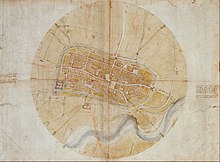
In Cesena in 1502, Leonardo entered the service of Cesare Borgia, the son of Pope Alexander VI, acting as a military architect and engineer and travelling throughout Italy with his patron.[37] Leonardo created a map of Cesare Borgia's stronghold, a town plan of Imola in order to win his patronage. Maps were extremely rare at the time and it would have seemed like a new concept. Upon seeing it, Cesare hired Leonardo as his chief military engineer and architect. Later in the year, Leonardo produced another map for his patron, one of Chiana Valley, Tuscany, so as to give his patron a better overlay of the land and greater strategic position. He created this map in conjunction with his other project of constructing a dam from the sea to Florence, in order to allow a supply of water to sustain the canal during all seasons.
Leonardo returned to Florence, where he rejoined the Guild of Saint Luke on 18 October 1503. He spent two years designing and painting a mural of The Battle of Anghiari for the Signoria,[37] with Michelangelo designing its companion piece, The Battle of Cascina.[nb 9] In Florence in 1504, he was part of a committee formed to relocate, against the artist's will, Michelangelo's statue of David.[42]
In 1506 Leonardo returned to Milan. Many of his most prominent pupils or followers in painting either knew or worked with him in Milan,[14] including Bernardino Luini, Giovanni Antonio Boltraffio and Marco d'Oggiono.[nb 10] At this time he may have commenced a project for an equestrian figure of Charles II d'Amboise, the acting French governor of Milan.[43] A wax model survives and, if genuine, is the only extant example of Leonardo's sculpture.
Leonardo did not stay in Milan for long because his father had died in 1504, and in 1507 he was back in Florence trying to sort out problems with his brothers over his father's estate. By 1508 Leonardo was back in Milan, living in his own house in Porta Orientale in the parish of Santa Babila.[44]
Old age, 1513–1519
From September 1513 to 1516, under Pope Leo X, Leonardo spent much of his time living in the Belvedere in the Vatican in Rome, where Raphael and Michelangelo were both active at the time.[44] In October 1515, King Francis I of France recaptured Milan.[30] On 19 December, Leonardo was present at the meeting of Francis I and Pope Leo X, which took place in Bologna.[14][45][46] Leonardo was commissioned to make for Francis a mechanical lion that could walk forward then open its chest to reveal a cluster of lilies.[47][nb 11] In 1516, he entered Francis' service, being given the use of the manor house Clos Lucé, now a public museum, near the king's residence at the royal Château d'Amboise. He spent the last three years of his life here, accompanied by his friend and apprentice, Count Francesco Melzi, and supported by a pension totalling 10,000 scudi.[44]

Leonardo died at Clos Lucé, on 2 May 1519. Francis I had become a close friend. Vasari records that the king held Leonardo's head in his arms as he died, although this story, beloved by the French and portrayed in romantic paintings by Ingres, Ménageot and other French artists, as well as byAngelica Kauffman, may be legend rather than fact.[nb 12]Vasari states that in his last days, Leonardo sent for a priest to make his confession and to receive the Holy Sacrament.[49] In accordance with his will, sixty beggars followed his casket.[nb 13] Melzi was the principal heir and executor, receiving, as well as money, Leonardo's paintings, tools, library and personal effects. Leonardo also remembered his other long-time pupil and companion, Salai, and his servant Battista di Vilussis, who each received half of Leonardo's vineyards. His brothers received land, and his serving woman received a black cloak "of good stuff" with a fur edge.[nb 14][50] Leonardo da Vinci was buried in the Chapel of Saint-Hubert in Château d'Amboise in France.
Some 20 years after Leonardo's death, Francis was reported by the goldsmith and sculptorBenvenuto Cellini as saying: "There had never been another man born in the world who knew as much as Leonardo, not so much about painting, sculpture and architecture, as that he was a very great philosopher.
Reviews
No customer reviews for the moment.
